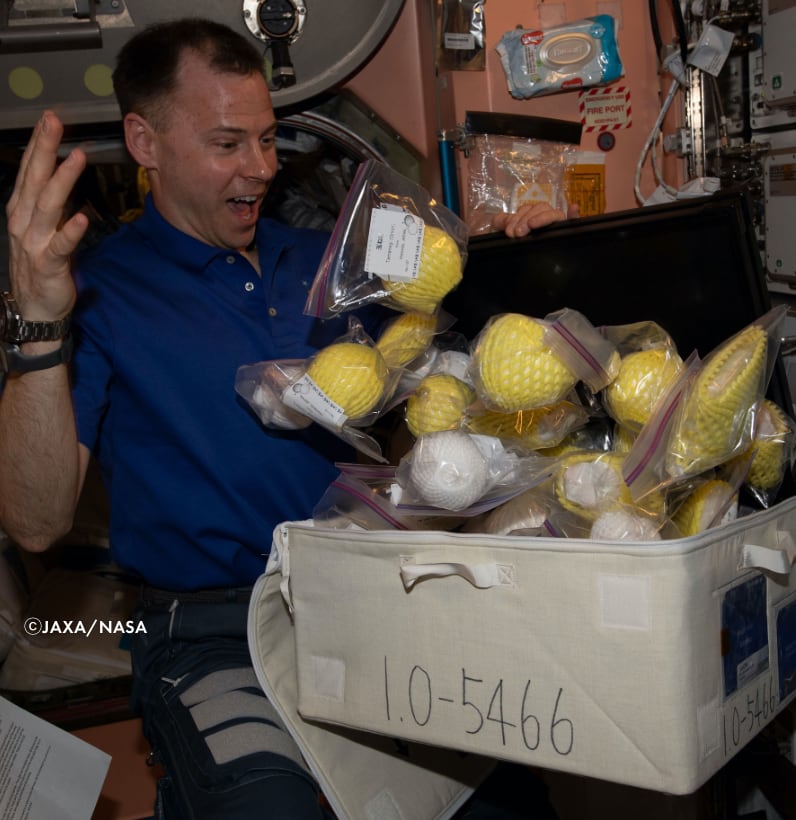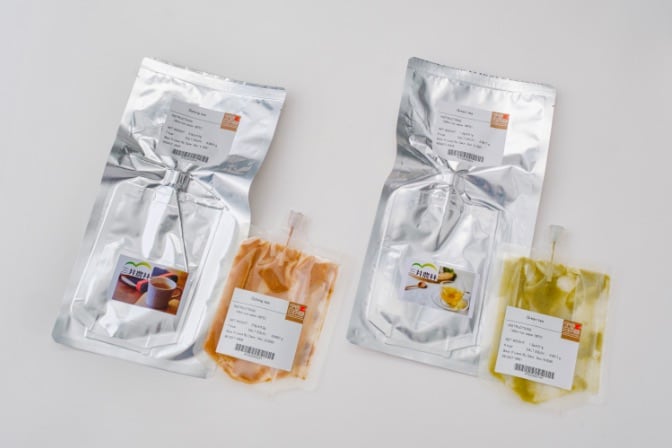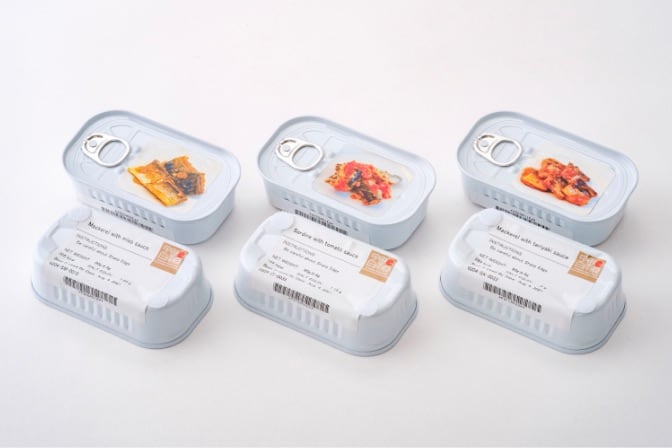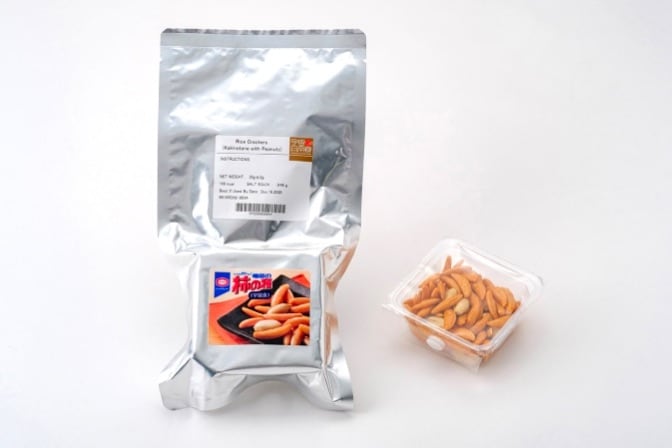Food in Space
What do astronauts eat in space?
Let's take a peek at what meals are like in space!

Regular meals, even in space!
What sort of meals keep astronauts going?
Space food provides essential meals for astronauts in space. How do astronauts take in proper nutrition in an environment so different from that on earth? Here we will describe the role of space food, its types, and the Japanese space foods and fresh foods that have actually been delivered to space.

Astronauts from all over the world love Japanese space food

Japanese space food was first developed because Japanese astronauts wanted to eat Japanese food even in space. Here we will introduce Japanese space foods that are loved not only by Japanese astronauts, but also by astronauts from countries all over the world.
Even fruits and vegetables! Fresh foods delivered to space
Fresh foods are also delivered to the International Space Station (ISS) by spacecraft. Here we look at the many fresh foods we have delivered so far, including fruits such as mandarin oranges and apples, and vegetables such as onions.

The role of space food

Space food has many roles. In addition to maintaining nutritional balance to keep astronauts healthy in space, providing them with a wide variety of delicious meals also helps with reducing stress, keeping their spirits up, and maintaining and improving their performance.
Daily calorie requirements for astronauts staying in space for a long time are calculated※ based on the astronaut's age, sex, and body weight.
* Given by provisions in the ISS Food Plan, a standards document on the provision of space food at the ISS.
| Men | Women | ||
| 18–30 years old | 1.7 x (15.3 x body weight (kg) + 679) (kcal) | 18–30 years old | 1.6 x (14.7 x body weight (kg) + 496) (kcal) |
| 30–60 years old | 1.7 x (11.6 x body weight (kg) + 879) (kcal) | 30–60 years old | 1.6 x (8.7 x body weight (kg) + 829) (kcal) |
For example, the allotment is 2,875 kcal for a 45-year-old man who weighs 70 kg, and 2,022 kcal for a 35-year-old woman who weighs 50 kg. These figures are almost the same as the daily calories needed on earth.
When carrying out extravehicular activities, intake is boosted by an extra 500 kcal.
Types of space food




Requirements for space food
Safety
- Containers and packages must not burn easily
- If a container or package burns, it must not produce toxic gases
Long shelf life
- Food must be storable for a long time at room temperature
A high level of hygiene
- To prevent issues such as food poisoning among astronauts, space food must ensure a high level of hygiene (bacterial types and counts in foods must be at or below standards)
Must not create risks when eaten
-
Preventing problems with the electrical systems
Spouts and straws that come with sealed food packages must be used to prevent foods containing liquids from scattering
Foods eaten as is must be increased in viscosity and made into sol form (thickened) to prevent scattering. -
Ensuring clean air
Food must not produce powder
Food that produces peculiar odors is not suitable
Unless specified otherwise, rights to all images belong to ©JAXA



